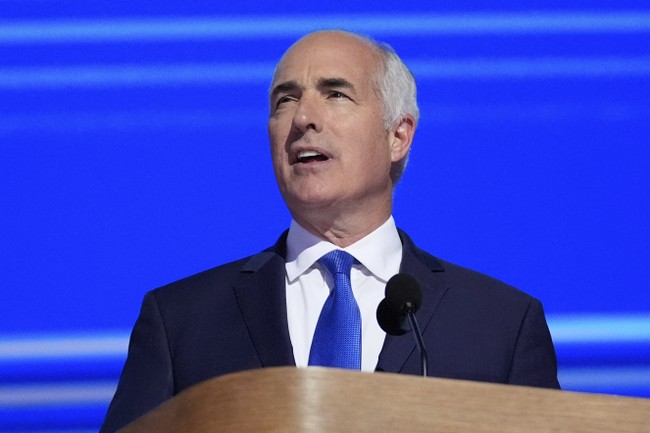The City of Cape Town has been releasing more sewage into the ocean from its Hout Bay marine outfall than its discharge permit allows. But following appeals over the granting of the permit, and a criminal case being laid against the City, environmental minister Dion George has lifted restrictions on the quantity of sewage it is allowed to discharge. Archive photo: Steve Kretzmann
- The City of Cape Town was granted permits to release sewage out to sea via pipelines in Hout Bay, Green Point and Camps Bay.
- The permits restrict the amount of sewage that may be released, and limit the level of toxic elements such as mercury, cadmium and arsenic contained in the sewage.
- Appeals over the granting of the permits were lodged in November last year.
- In September, the new environment minister lifted the quantity restrictions on the permits pending the appeals.
- Mayco water and sanitation member Zahid Badroodien said the city is growing, and so are volumes of sewage, and there was no other option at the moment.
- Depending on how much sewage is released, it could exceed the marine environment’s ability to absorb it.
An unlimited volume of untreated sewage is now allowed to be pumped out to sea by the City of Cape Town, following a decision by environment minister Dion George.
This was revealed in George’s parliamentary reply to a question posed by ActionSA MP Malebo Kobe on what steps the Department of Forestry, Fisheries and the Environment (DFFE) was taking against the City of Cape Town releasing more than 30-million litres of raw sewage into the marine reserve per day.
George, in his response in September, said Cape Town had coastal waters discharge permits for three marine outfalls (underwater pipes through which sewage is pumped into the ocean), situated in Green Point, Camps Bay and Hout Bay. The permits allow the City to discharge 25-million, 11.3-million, and 5-million litres of sewage into the sea per day from each of these outfalls respectively. The only treatment the sewage receives before being released into the ocean is to be pumped through a sieve to remove solids.
But the granting of these discharge permits, which set limits on the volumes of sewage that can be pumped, as well as limits for elements such as nitrogen, mercury and cyanide amongst others, have been appealed by the public and various organisations, such as the National Sea Rescue Institute.
“These three permits are all subject to ongoing appeals,” stated George. “However, an interim decision was taken on 28 August 2024, in which the effluent quantity (in other words, flow) limits in the CWDPs (Coastal Waters Discharge Permits) were suspended pending the outcome of the appeals.” He added that the City of Cape Town “is not limited to the daily discharge limits”.
Meanwhile, the City had already been exceeding the sewage quantity limits set by the existing permits.
According to water and sanitation mayco member Zahid Badroodien, the average discharge during October was 1.8-million litres per day above the permit limit, and was 700,000 litres per day above the permit limit for Green Point. The Camps Bay outfall remained well under the discharge volume limit.
The appeals
The permit for the Hout Bay outfall was granted by the DFFE in 2019, while the Green Point permit was granted in December 2022, and the Camps Bay permit in January 2023. Prior to them being issued, the outfalls had been operating under a general authorisation from the national Department of Water and Sanitation.
But when the City received the discharge permits, it did not notify the public and interested and affected parties, which effectively denied the public the right to appeal. The matter only became known when the NSRI asked the City in January last year about the status of the permits.
The subsequent appeals to the DFFE by the NSRI, ActionSA, Capexit, Stefan Smit, and Tracey Satt, were on the basis that, among others, the sewage was being discharged into a Marine Protected Area; pumping untreated sewage into the ocean contravened the constitutional right to a healthy environment; and there was no evidence a proper risk assessment or public participation process had been conducted.
This led to former DFFE minister Barbara Creecy ordering the City to conduct a new public participation process, which closed on 21 November last year. These appeals have still not been finalised.
This is despite Creecy having stated, in her 2023 decision to allow the appeals, that “the discharge of sewage into the ocean can have significant impacts on the environment and public health”.
Criminal case
Documents last year obtained by ActionSA through the Promotion of Access to Information Act showed the City had violated the conditions of its permit for the Hout Bay outfall by exceeding discharge volumes on 104 out of 181 days during the first six months of 2023. The City had also failed to establish a Permit Advisory Forum, among other conditions of the permit.
As a result ActionSA opened a criminal case against the City for contravening the Integrated Coastal Management Act.
But the City wasn’t just non-compliant with the Hout Bay outfall permit. George also revealed that the DFFE had in February this year – prior to George being appointed minister – issued compliance notices to the City for contravening “certain conditions of the permits” for each of the City’s three outfalls. He said in respect of the Hout Bay outfall, a criminal case had been investigated and a docket sent to the National Prosecuting Authority (NPA).
The NPA has failed to respond to questions about the charges and whether they will be prosecuted.
Environmental concerns
A 2017 report by the CSIR commissioned by the City of Cape Town, and to which the City in its presentations often refers in response to criticism of the marine outfalls, states the negative impact of discharging sewage into the aquatic ecosystem depends on the ecosystem’s assimilative capacity.
“The assimilative capacity is essentially a receiving environments ‘pollution diet’ – too much pollutant loading combined with inefficient dilution and dispersion and deleterious effects will manifest,” states the report.
It goes on to state that while the “high-energy marine environment” has a higher capacity to assimilate sewage than a sheltered water body such as an estuary, “of importance is the volume of effluent discharged”.
It states that while the concentration of contaminants contained in sewage may not cause the death of marine organisms, “their persistent introduction may overwhelm the assimilative capacity of a receiving environment in the long-term and result in chronic toxicity (non-lethal effects, such as reduced reproductive potential and growth of aquatic organisms)”.
Environmental activist Caroline Marx, who sits on the City’s mayoral advisory committee for water quality, said marine outfalls are designed with a defined assimilative capacity for the environment.
“It is not understood why the minister has decided to completely ignore this so-called safe limit and allow the discharge of unlimited quantities of raw sewage for an undefined period.”
Marx said additionally, the sewage was being released into a Marine Protected Area. The Table Mountain National Park Marine Protected Area extends from Granger Bay, around Cape Point to St. James in False Bay.
She said it was also concerning that the City and the DFFE appeared to ignore the City’s non-compliance with the conditions of the Hout Bay discharge permit for four years, until ActionSA laid a criminal charge.
City growing
Badroodien said the previous permits under the Department of Water and Sanitation granted in 2011 allowed up to 17.5-million litres of sewage to be discharged per day in Hout Bay and up to 85-million litres per day off Green Point.
He said the new permits, under the DFFE, make no allowance for storm water when it rains, or higher volumes cause by peak period flows.
“The reductions that were applied are not in line with the design capacity of each outfall and appear incorrect when one has regard to the City’s growth and most importantly its compliance with the original 2011 permitted volumes,” said Badroodien.
He said the city is growing and so are volumes of sewage, and there was no other option at the moment but to utilise the outfalls.
However, he said the City was looking at developing other options for the future.
GroundUp has previously reported on the City’s study on options such as establishing new waste water treatment works to treat the sewage before releasing it into the ocean, or piping it to existing waste water treatment works.





















Discussion about this post